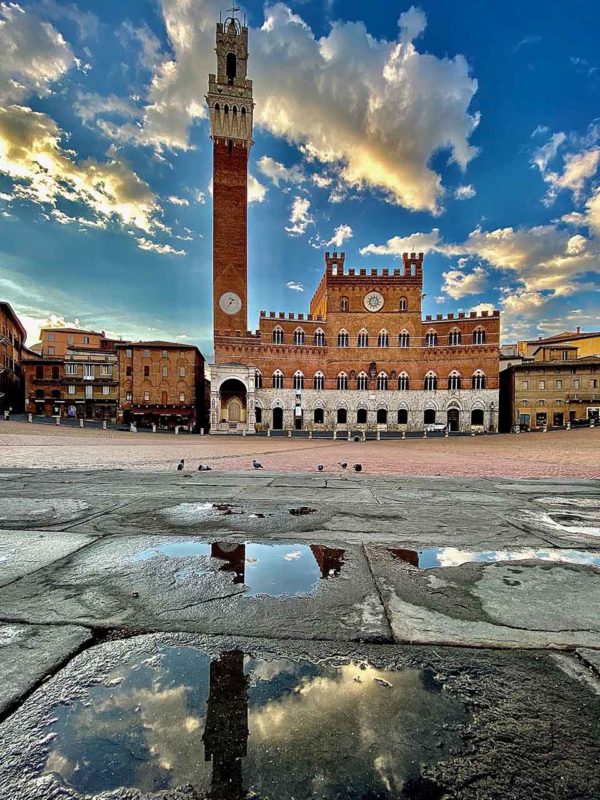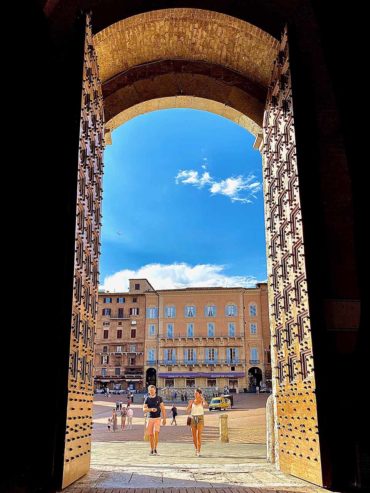Piazza del Campo


Piazza del Campo
Piazza del Campo, known to the Siena people simply as “Il Campo” is the heart of the city of Siena.
Its not perfectly geometric shape could suggest a random formation. Instead, it was created, with precise municipal rules that established its shape as well as the character that the buildings overlooking it had to have, on the intersection of the three communication routes that reached Siena.
Piazza del Campo was created in shape of a shell on an ideal circumference of 333 meters and a red brick pavement divided into nine sections. The sections represent the nine governors who were in power during the “Government of the Nine”, in office from 1287 to 1355. This singular shape was also intended to symbolically represent the cloak, with related folds, of the Virgin Mary, Patroness of Siena.
Piazza del Campo was conceived from the beginning as a place where all citizens could gather for various events, both political and entertainment. And various events still take place there, including of course the famous Palio di Siena.
The square is bordered on one side by the Palazzo Pubblico, which is the ancient seat of the Government of the Nine. The Palazzo Pubblico today is a museum that offers visitors numerous works of Sienese art.
At the left end of the Palazzo Pubblico stands the Torre del Mangia, 100 meters high and from which you can admire a splendid panorama of the city of Siena.
It was completed in 1348 in red brick and travertine. However, the origin of the name is uncertain but it seems to be due to a character (Giovanni di Balduccio), the bell ringer of the tower who had the nickname “the profit eater” as he was addicted to the habit of gambling.
At the base of the Torre del Mangia stands the Cappella di Piazza, a votive monument dedicated to the Virgin Mary as thanks for having saved part of the population from the terrible “black plague” which struck the whole of Europe in the mid-1300s.
Another prominent monument contained in Piazza del Campo is the Fonte Gaia, a monumental fountain located in front of the Palazzo Pubblico and adorned with numerous engravings originally made by Jacopo della Quercia in 1409. Today’s engravings are however a copy of the originals, edited by Tito Sarrocchi.
The original engravings are now visible and preserved in the Museum of the Hospital of Santa Maria della Scala. Fonte Gaia was finished in 1346 and is fed by underground tunnels that extend for tens of kilometers.
How to get there
Palazzo del Papa Suites is about 1 km as the crow flies from the historic center of Siena. To get to Piazza del Campo, you can proceed by car to Porta Ovile (about 5 minutes) and then continue easily on foot.


